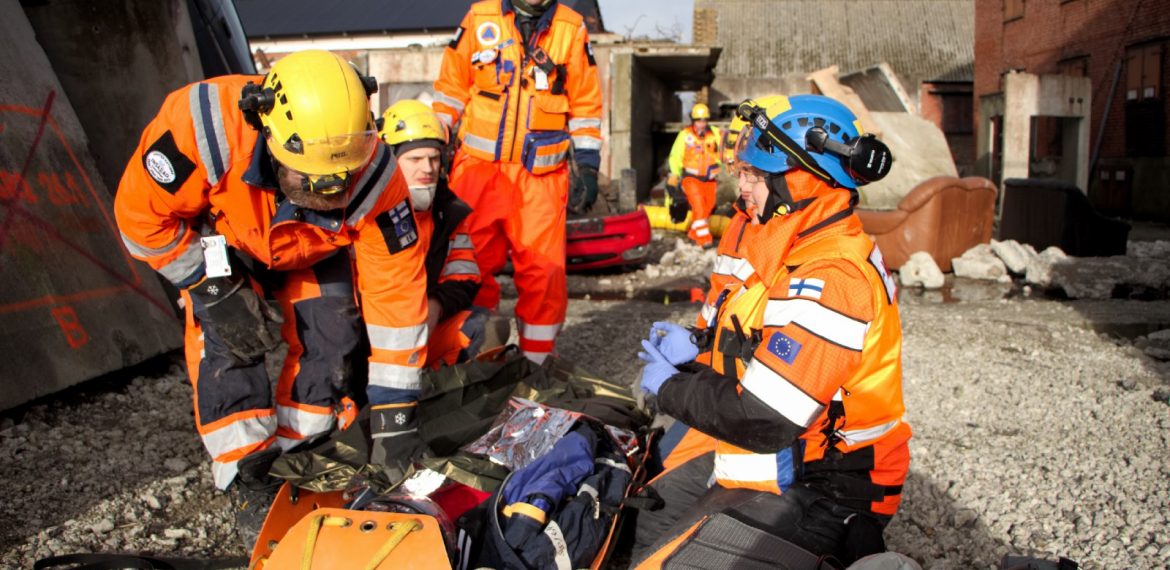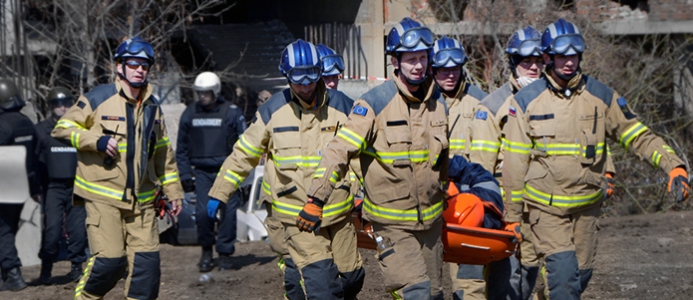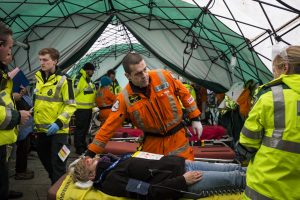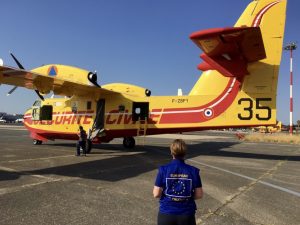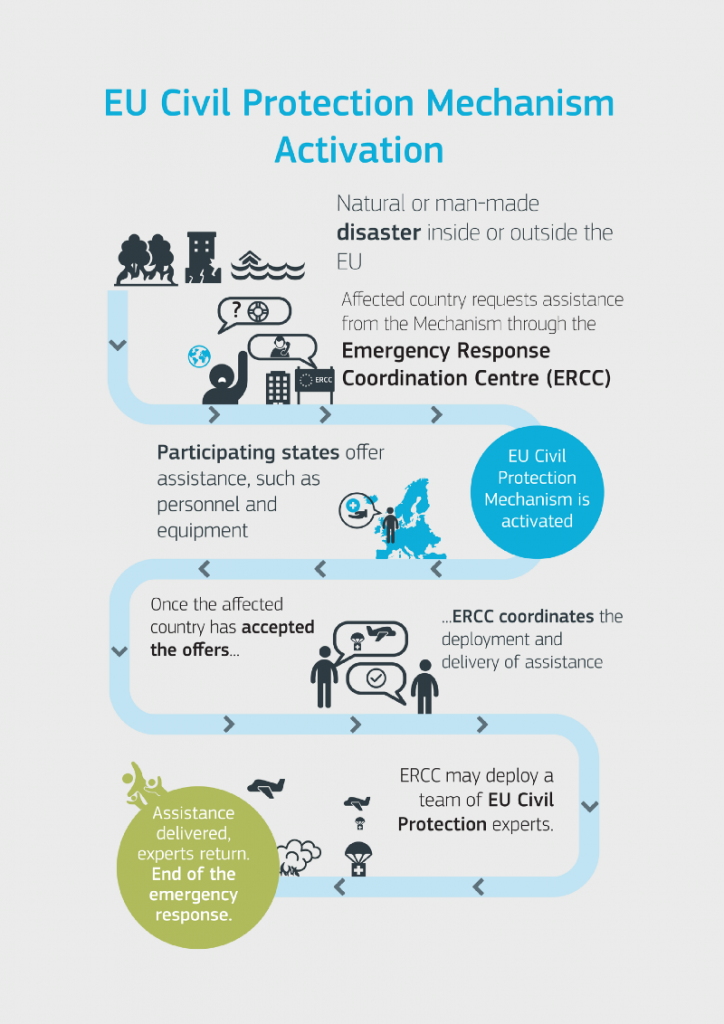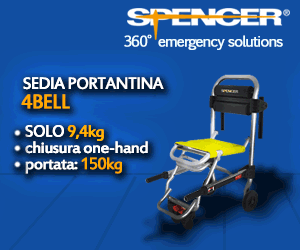In occasion of The Emergency Services Show 2018, we interviewed Hanna Burkow, Coordinator of the SAYSO project. It is a non-profit Civil Protection practitioner-led EU funded project, focused on tackling the challenges in Situational Awareness met by emergency responders during civil protection operations. It is such an important topic to keep improving on what practitioners should do, to do it best!
SAYSO stands for “Standardization of Situational Awareness sYstems to Strengthen Operations in civil protection”. It is a simple solution for really difficult situations. When you have to face a crisis with catastrophic parameters, you need management coordination across different rescue team and équipe. Sometimes, this organisation have to exceed the boundaries. In order to start an intervention and reduce the risk of losing lives during the crisis, the manager has to be aware of the situation surrounding him/her. The first step in building a crisis-direction team is sharing all the information with a trans-sectoral instrument. This is the role of SAYSO: it is a network that supports the information flux to be perceived by all the chief involved in the emergency. Current systems for sharing information in the context of Situational Awareness are not adapted to operate in cross-border contexts and present several shortcomings related to interoperability, data management/processing, decision making, standardisation and procurement. This hinders a reliable sharing of situational awareness information.
SAYSO will address these shortcomings and pave the way for the possible development of European standardised Situational Awareness Systems for Multiple Stakeholders by describing the “scenery” of present Situational Awareness Systems as well as the requirements for future systems. The approach followed in SAYSO is summarised in the figure below.
Future users will be the forces in the operational field such as relief units of THW (Federal Agency for Technical Relief) or firefighters and the higher-level strategic crisis management.
-
Regarding the show, how did it go? How was this experience like?
“It went very well and it was a very good experience. The show was really inspiring and impressive as we had the possibility to speak and exchange with practitioners and suppliers. For me in particular it was remarkable to see all the tools and ideas that I was interested in. In particular, I enjoyed seeing the practitioners benefiting from those tools so we tried for instance two different augmented realities used for training purpose of firefighters and police. So all in all the show was very interesting and diverse input for me and for the project as well.”
- Let’s talk about SAYSO which is the acronym of Standardization of Situational Awareness Systems to Strengthen Operations, related to civil protection, as we mentioned before. Let’s begin from scratch: what is SAYSO? What is its story and what were the necessities that made it grow?
“The acronym is long as the story is. This is a two-year project and it’s funded by the European Commission and we started in May 2017. Now we are facing our last six months of this project and the aim is to provide public authority and suppliers with a comprehensive set of specifications for developing standardized situational awareness systems and so systems should enable the practitioners to get access to data: visualize them and share them within or even across organizations. The need for dealing with this topic arises out of the importance of the topic and in combination with a certain shortage situational awareness is crucial for any civil protection practitioner or emergency responder and it’s about the ability to select, dig in and understand the large volumes of the lying data from different sources very quickly so you need to know what is going on and understand what will happen. This is not easy to manage as you might to have too little information, contradicting or even too much information and so in most major incidents multiple stakeholders from different organizations I involve the flow do not stop at borders so this arm makes it even more difficult to know what is going on and to comprehend the current situation.”
- The main goal of this project is to develop SAS (Situational Awareness Systems) in order to help civil protection operators to improve their job quality. In which sense?
“Sayso does not produce any system tool, but deliver specifications for what future standardization situational awareness systems could look like and what functionalities they should include so the results can then be used by Civil Protection organizations for developing future standardized situational awareness systems and such we will provide them with necessary tools and documentation to procure Sayson compliant systems at an affordable price using European funding and in the long term that will hopefully improve the situational awareness for practitioners and the job quality as well and I think that we need to be persistent with this topic to achieve a significant improvement in the future and police. I’d like to come back to the question before. Shortcomings come into play at the moment where multiple stakeholders are involved and where we would like to share data and to visualize this as this is really difficult and there is a variety of single and different solution used and some might be working well and others might need improvement but sharing data it’s not getting easier when more stakeholders from different countries even me are involved. So this is a two steps-phase in which we aim at gaining a better knowledge of that tools exist on the market and who is using them and how these tools could be improved or harmonized to better support practitioners as well. It’s a very small project but we put a lot of ambitions in it and so we try to connect the European practitioners together with believers and suppliers and we like them to discuss with each other the needs and the requirements. This way we have a network and community that we call situational awareness innovation network Europe long term of the wall here but we want to leave the network at the end after the project, so we can go ahead with just connecting the different stakeholders in this area.”
- In which consists the preparatory work for emergency operators that SAYSO will put in the field?
“The first of Sayso is to put together the requirements of Civil Protection practitioners emergency responders. This was the starting point for any further project work the idea is to ask them what they require, which tools would assist them best in the work and what would be essential to them for doing the work. This is what we have done for instance during the first year of the project and as a result, we have made an inventory of practitioners requirements and in parallel our project has also explored the situational awareness technology that is already available on the market right now and then, next step on the basis of this gathered requirements we are right now defining specifications and kind of reference architecture for future standardized situational awareness systems and these are being developed and validated as well as with the input and feedback from both practitioners and suppliers. Right now the project is also focusing on standardization both it’s European and at the EU member state level as well to see how we can integrate all the existing standards best in the project and in the system as well. In the end, we will have prepared a kind of framework for the future standardization and situational awareness systems. Last but not least, there will be a young toolkit for future procurement that it will be possible for Civil Protection organizations to go ahead with was developing a system.”
- Can you tell us other results that you reached for this project?
“Sure, as I mentioned it before, we identified 40 samples for main key areas for development and practitioners probably will know this very well, this is some basics for planning and coordination then importing and sharing relevant data and information, electronic visualization of data and information and assigning as well in regard to the basic requirements therefore instant contact details of relevant stakeholders, the possibility to use a logbook or the possibility to display and access different information and via different information layers and very important in this context is the ability of the system to provide Resource Management. Practitioners expect to be able to locate and coordinate the units and the equipment in real time on the screen and another important example armed practitioners came up with is the online version of data that is needed during a Civil Protection mission of emergency response in case of any interruption of the network connection. Basically the devices that are commonly used are for show smartphones, tablet, notebooks but very important here as well the radio communication. When you consider a second area, the importing and sharing of relevant information there it is that certain information is needed to perceive and analyze the situation you can address general and hazard information that needs to be integrated, it’s more about general data weather, time, location of the incident surroundings and for sure you need to know the number of affected people acute dangers or other hazards and first it should be for example possible to also import immediately information from sensor data from the scene. This could be audio or video data from cameras or drones or picture from satellites and then to the third area following this in another step this is electronic visualization of data and information so you want to show the information you have gathered and here it’s mostly all about mapping and modeling it, it is required to have an interactive geo reference, situation map shown there sent resources and existing damages. This should also be possible to use and integrate symbols and technical signs, this was very important for the practitioners as well and additionally you should be able to integrate and show in the map various points of interest and more information you can get access to using the different informational layers and this could be for instance critical infrastructure or flooded areas, such seeing and monitoring which areas are flooding to assign resources in the best way as possible.”
- We heard about a Public Workshop realized by SAYSO. Can you tell something more about it?
“We had the first public workshop in March in Berlin this year and our certain public workshop will take place on the 4th December and we would be very glad to invite all the readers and listeners to participate in our workshop and discuss with us and to help us in shaping the specifications of our framework for situational awareness systems for multiple stakeholders so we are really looking forward to discussing these ways with interested practitioner supplies and procures and if you are interested you can find further information on our website and you can also find information how you can join the network on our say-so online community platform. We are also on Twitter so you can keep up updated with the latest project’s news.”
SOURCE

